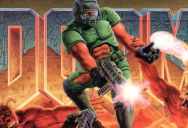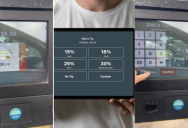90s Video Game ‘Doom’ Is Famous For Being Able To Run On Any System, So Researchers Put It To The Test And Ran it On A Neural Network

Almost everyone who grew up in the 1990’s knows about the iconic 1993 video game Doom. By today’s standards, the game is ancient, the graphics laughable, and the storyline simple.
The reality is, however, that people have been playing it for three decades now and it remains one of the most recognizable titles around.
One of the many things that make this first person shooter game remain popular is that it can be made to run on many different systems. It started out as a PC game, but has been adapted to most every gaming system (either officially or unofficially).
It has also been run in on much more creative ‘systems.’
For example, in the digital world of Minecraft, someone built a system that ran Doom. Other people had it run on a calculator (which was powered by moldy potatoes. One person even set it up so you can actually play Doom inside of a game of Doom, which you can see here:
Those are just a few of the countless weird places that people have ported Doom, and the list is not going to end anytime soon.
Recently, researchers with Google and Tel Aviv University have taken the trend to a whole new place. They are using generative AI models to run the game without any normal video game engine.
In the paper, the researchers write:
“Can a neural model running in real-time simulate a complex game at high quality? In this work, we demonstrate that the answer is yes. Specifically, we show that a complex video game, the iconic game Doom, can be run on a neural network.”
They created a new diffusion model, which they are calling GameNGen, which is based on Stable Diffusion’s open-source version 1.4.
The model was trained by feeding it 900 million frames that were taken from Doom game footage. The neural network then operates by producing the next frame based on user input.
The paper explained:
“While not an exact simulation, the neural model is able to perform complex game state updates, such as tallying health and ammo, attacking enemies, damaging objects, opening doors, and persist the game state over long trajectories.”
There are still limitations to the way this system works. For example, they say:
“The model only has access to a little over 3 seconds of history.”
This can cause issues such as barrels or bad guys that were killed or damaged coming back unexpectedly.
Other parts of the game, however, are kept current by the use of pixels on the screen. For example, the health of the player is always displayed, so even though the game doesn’t ‘know’ how much health the player had 5 seconds ago, it doesn’t lose its current health status. The same can be said of other things on the screen like weapons, ammo, and more.
This effort is much more than just showing off that Doom can run on anything. The system they used, they hope, will help to push video game technology forward.
“Today, video games are programmed by humans. GameNGen is a proof-of-concept for one part of a new paradigm where games are weights of a neural model, not lines of code.”
Here is a video of the game being played on their new system.
Whatever the future of video game technology holds, Doom will always be a part of it.
And there’s something a little comfortin about that.
If you thought that was interesting, you might like to read about a quantum computer simulation that has “reversed time” and physics may never be the same.

Sign up to get our BEST stories of the week straight to your inbox.




